Welcome to our comprehensive guide on year-round care for jackfruit orchards! Whether you’re a seasoned farmer or just starting, this blog will provide valuable insights on month-wise operations and maintenance for your precious jackfruit trees. By understanding the specific needs of your orchard throughout the year, you can ensure optimal growth and a bountiful harvest.
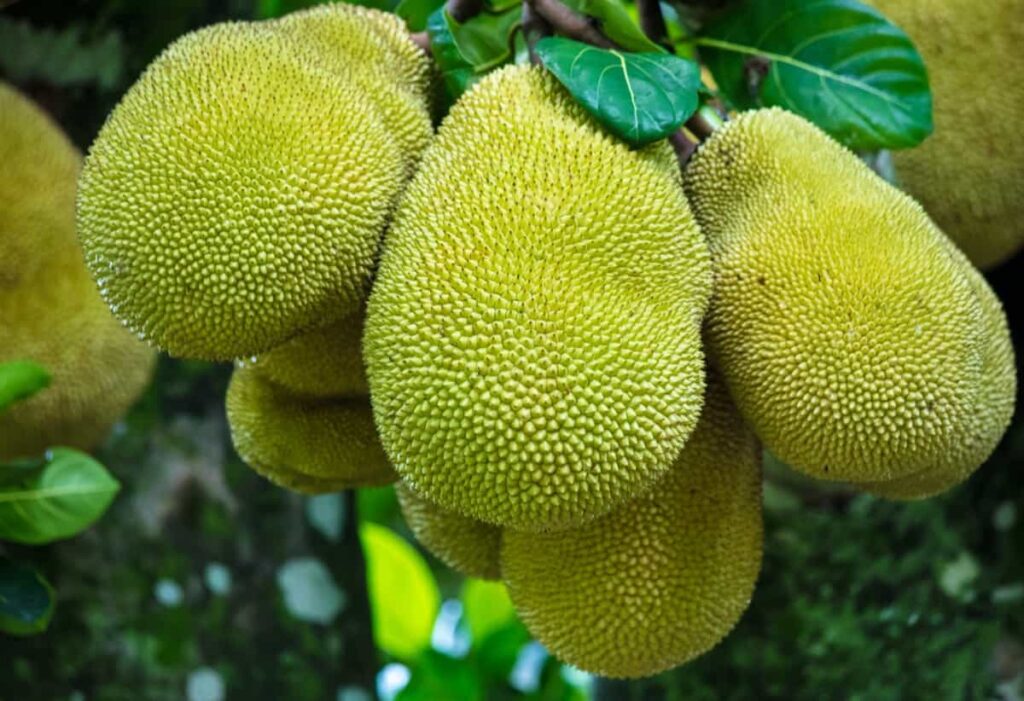
From January to December, each month presents unique tasks and challenges that demand your attention. We’ve compiled accurate data and expert advice to help you confidently navigate this journey. Get ready to dive into a wealth of knowledge as we unravel the intricacies of pruning, fertilizing, pest control, irrigation, and more. No matter the season, our engaging and easy-to-read content will equip you with the right information to keep your jackfruit orchard flourishing.
Jackfruit Orchard Management
What is Jackfruit Farming and its Overview?
Jackfruit farming is an intriguing practice that involves cultivating the jackfruit tree, scientifically known as Artocarpus heterophyllus. This remarkable tree belongs to the fig, mulberry, and breadfruit family (Moraceae). It thrives in tropical lowlands and is extensively grown in various regions worldwide, including India, Philippines, Indonesia, Bangladesh, Sri Lanka, and the rainforests of Malaysia and Australia.
One of the notable characteristics of the jackfruit tree is its ability to produce enormous fruits, weighing up to a staggering 55 kg (120 pounds), measuring 90 cm (35 inches) in length, and having a diameter of 50 cm (20 inches). A mature jackfruit tree yields around 200 fruits per year, with older trees capable of bearing up to 500 fruits annually. Interestingly, the jackfruit is a multiple fruit comprising of individual flowers, and its unripe flesh is commonly consumed.
Jackfruit finds its place in South and Southeast Asian cuisines, where ripe and unripe fruits are utilized. It has gained international popularity and is available in various forms, such as canned, frozen, and even incorporated into chilled meals. Regarding its physical attributes, the jackfruit tree possesses a short trunk with a dense treetop, reaching heights of 10 to 20m and trunk diameters of 30 to 80cm.
The leaves are alternate, gummy, and thick, with a central main nerve and six to eight lateral nerves. The tree’s inflorescences, which give rise to the flowers and subsequent fruits, can be found on the trunk, branches, or twigs. Jackfruit trees are monoecious, bearing both male and female flowers on the same tree. The fruits themselves are ellipsbylroundish in shape, formed from the combination of the ovaries of multiple flowers.
In case you missed it: From Garden to Table: A Comprehensive Guide on Growing and Caring for Spaghetti Squash
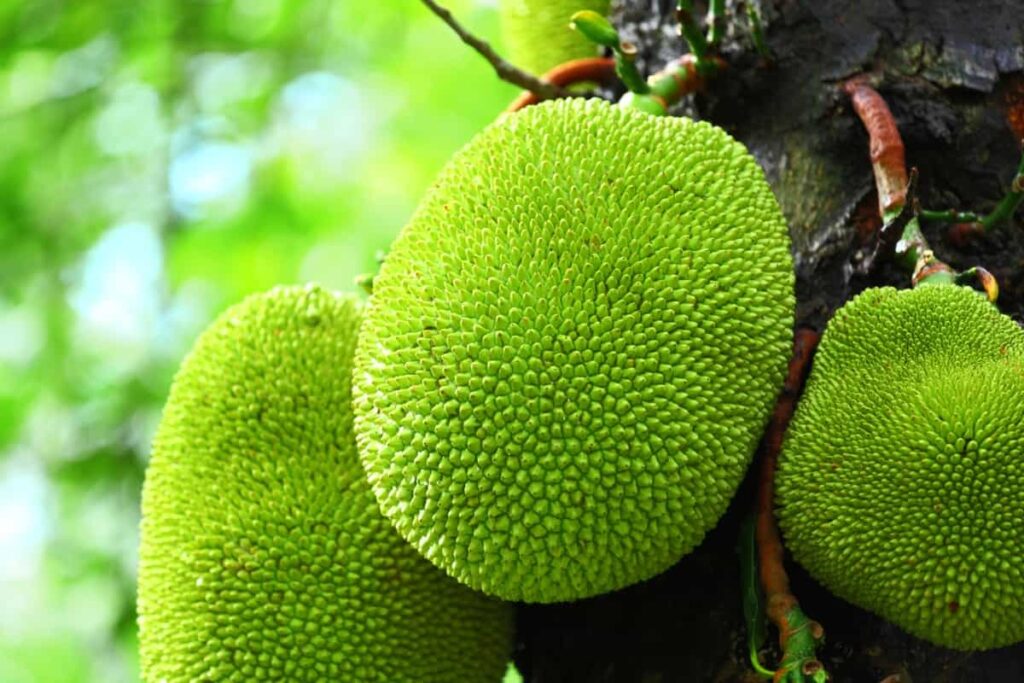
They grow on long, thick stems attached to the trunk and can vary in size, ripening from a yellowish-greenish hue to a yellowish-brown shade. A mature jackfruit can have a length ranging from 30 to 100 centimeters (10 to 40 inches), a diameter of 15 to 50 centimeters (6 to 20 inches), and weigh 10 to 25 kilograms (22 to 55 pounds) or more. Each fruit contains about 100 to 500 seeds enveloped by a fibrous, whitish core surrounded by an edible seed coat, edible seeds, white pulp, and bark.
Regarding culinary applications, ripe jackfruit boasts a naturally sweet taste, often compared to flavors like pineapple or banana. It is used in dishes like custards and cakes or with shaved ice in delightful treats like es teller in Indonesia or halo-halo in the Philippines. Once cooked, the seeds of ripe jackfruit have a milky and sweet flavor akin to Brazil nuts, making them suitable for consumption after boiling, baking, or roasting. Roasted jackfruit seeds resemble the taste of chestnuts. Young jackfruit leaves are also tender enough to be used as a vegetable.
Best Tips for Growing Jackfruit
Soil and Climate Requirements
- Jackfruit thrives in rich and well-drained sandy loam soil. Adequate soil drainage is crucial to prevent waterlogging, which can harm the trees.
- Lime and chlorine content in the soil can be tolerated to some extent by jackfruit trees. Areas near river beds are well-suited for cultivation.
- Jackfruit grows best in warm and humid plains but can also flourish in humid hill slopes up to 1,500 meters. However, fruit quality may deteriorate in higher altitudes.
- Cold weather, frost, and hot summer desiccating winds can negatively affect jackfruit trees’ growth.
Jackfruit Varieties
- Jackfruit exhibits significant variation in various characteristics such as shape, size, rind color, fruit quality, and maturity. These variations provide opportunities for selecting promising strains through clone selection.
- Some popular jackfruit varieties include Gulabi (rose-scented), Champa (flavor similar to champak flower), and Hazaric (bearing a large number of fruits).
- The cultivated types are broadly categorized into two groups based on consumer preference: soft flesh and firm flesh. Soft flesh varieties have juicy and easily yielding pulp, while firm flesh varieties have firmer pulp.
Jackfruit Propagation
- Jackfruit is primarily propagated through seeds, which leads to significant variation and prolonged juvenility in the trees. Seeds should be soaked in water and treated with growth regulators for improved germination and seedling growth.
- Vegetative propagation methods like grafting have yet to yield satisfactory results. However, inarching and layering techniques have been found effective for multiplication.
- Stool layering, which involves burying branches to develop roots, has shown better results than air layering due to the presence of fibrous roots.
- Care should be taken during seedling transplantation to avoid root damage, as any injury can hinder plant establishment.
In case you missed it: Optimizing Tamarind Orchard Management: A Month-by-Month Maintenance Guide for High Yields and Profit

Jackfruit Plantation
- Before planting, 1 x 1 x 1 m pits should be dug for ten days. To avoid insect attacks, each pit should be filled with well-rotted farmyard manure, superphosphate, and chloropyriphos.
- Planting grafts or seedlings should be done from June to August. Waterlogging should be avoided, as jackfruit trees are sensitive to it.
- Spacing between trees depends on soil fertility, with 12 x 12 m or 11 m apart common recommendations for average and fertile soils, respectively.
- Young plants are protected from animals, and hand watering during the first few summers is necessary for their survival and growth.
Care of Jackfruit Plants
- Goats favor jackfruit leaves, so young plants should be protected from grazing animals using gabions or other methods.
- Regular weeding and mulching are essential to ensure normal plant growth.
- Fertilizer application should follow recommended NPK (nitrogen, phosphorus, potassium) ratios, with adjustments based on tree age and fruit development stage.
- In areas with boron deficiency, spraying trees with a borax solution or applying borax during fertilizer can help prevent fruit abnormalities.
- To ensure normal plant growth, irrigation should be provided during dry periods, especially in arid regions. A ring system of irrigation is recommended.
Intercropping in Jackfruit Orchard
- Before jackfruit trees start bearing fruits (around 5-7 years), intercropping can be practiced to use space efficiently and generate additional income.
- Suitable intercrops for jackfruit orchards include crops that require partial shade, such as ginger, turmeric, black pepper, and vanilla.
- Leguminous crops like pigeon peas or green gram can be grown as intercrops to fix atmospheric nitrogen and improve soil fertility.
- However, care is taken that intercrops compete appropriately with the jackfruit trees for resources like water, nutrients, and sunlight.
In case you missed it: Exploring the Essence of Korean Natural Farming (KNF): Harmony in Soil and Soul
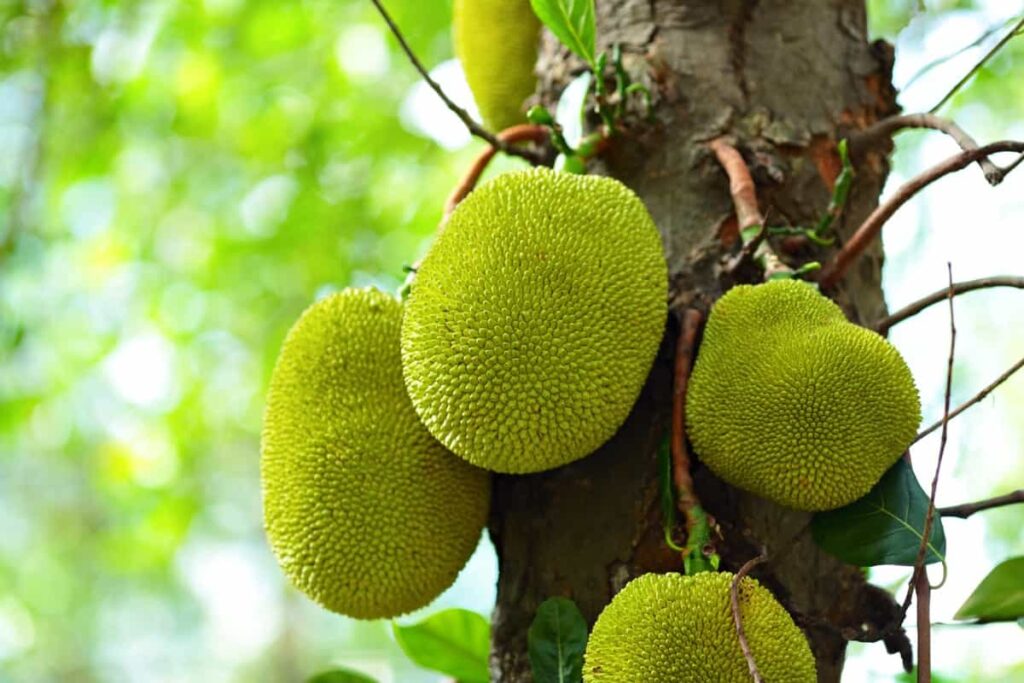
Pruning and Training in Jackfruit Orchard
- Pruning is needed to maintain the shape and size of the jackfruit tree, improve air circulation, and facilitate sunlight penetration into the canopy.
- The first pruning is done after planting to remove any weak or damaged branches and encourage the development of a strong central leader.
- Subsequent pruning should occur during the dormant season to remove diseased, overcrowded, or crossing branches. This helps reduce the risk of pest and disease incidence.
- It is important to prune judiciously, avoiding excessive foliage removal, as it can reduce fruit production.
Pest and Disease Management
- Regular monitoring of orchards is crucial to detect and manage pests and diseases in a timely manner.
- Common pests of jackfruit include jackfruit borer, fruit flies, aphids, and mealybugs. Cultural practices like sanitation, removal of infected fruits, and intercropping with pest-repellent plants can help control pest populations.
- Disease management involves preventive measures such as proper sanitation, removing infected plant material, and using disease-resistant varieties. Fungicide sprays may be necessary in severe cases.
- Maintaining good orchard hygiene, including regular pruning, removing fallen leaves and fruits, and properly disposing of plant debris, can significantly reduce pest and disease incidences.
Fruit Harvesting and Post-Harvest Practices
- Jackfruit trees typically start bearing fruits after 5-7 years, based on the difference and growing conditions.
- Harvesting is done when the fruit is fully mature but still firm. The color of the rind changes from green to yellow or brownish-yellow when the fruit is ripe.
- Care should be taken during harvesting to avoid damage to the fruit or tree. Using sharp tools and wearing gloves are recommended.
- After harvest, the fruits should be handled gently to prevent bruising. They can be stored at room temperature for a few days, but for longer storage, it is advisable to refrigerate them.
- Post-harvest practices like cleaning, grading, and packaging should be done to maintain fruit quality and extend shelf life.
January Month Jackfruit Orchard Maintenance Planning
- Plow the orchard but halt irrigation work.
- Apply the first spray of zinc sulfate at a rate of 2 g/l.
- Conduct pruning to address mite-infested twigs.
- Remove shoots affected by mites, leaf miners, and weevils, and consider placing Trichogramma cards at the bud stage.
February Month Jackfruit Orchard Maintenance Planning
- Perform leaf analysis to assess nutrient status.
- Apply the second spray of zinc sulfate after 15 days of the first spray.
- Introduce honey bee boxes at a rate of 10/ha during flowering to aid in pollination.
March Month Jackfruit Orchard Maintenance Planning
- Apply Planofix at 2 ml/5 lit of water or NAA at 20 mg/l one week after the fruit setting.
- After 15 days of fruiting, spray borax at a rate of 4 gm/l.
- Apply 1/3 amount of nitrogen and irrigate the basins at 5-7 day intervals once the fruit setting is over.
In case you missed it: How to Grow and Care for Snapdragon Flowers: A Step-By-Step Comprehensive Guide
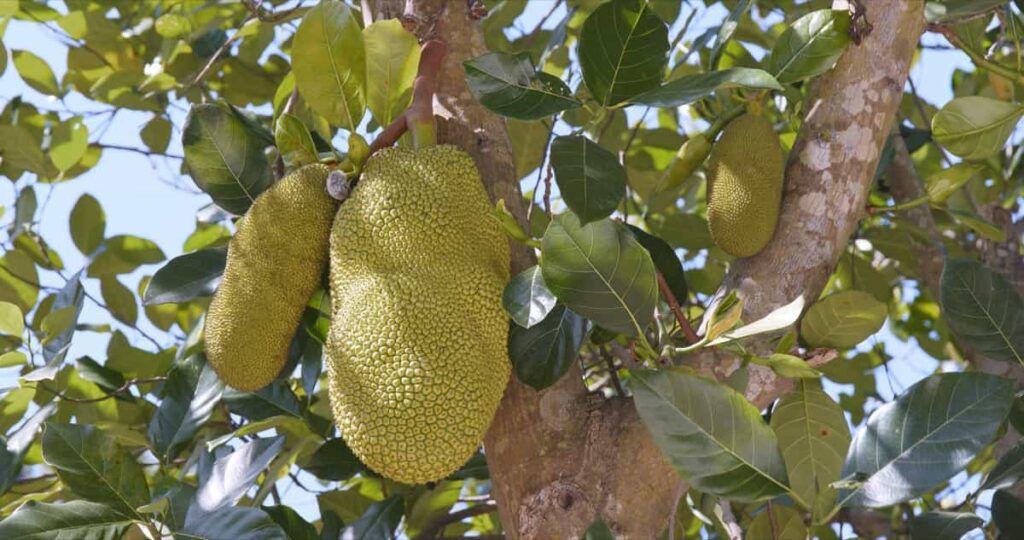
April Month Jackfruit Orchard Maintenance Planning
- Apply the second boron spray after 15 days of the first spray, repeating it after 30 days.
- Manage the litchi bug as required.
- Conduct soil and leaf analysis.
- Provide irrigation water per the plant’s needs, with sprinkler or drip irrigation particularly useful.
- To control fruit and seed borers, apply cypermethrin at one ml/l 45 days before fruit maturity and repeat every 10-15 days.
May Month Jackfruit Orchard Maintenance Planning
- Continue regular irrigation until fruit maturity.
- Harvest fruits when their color deepens to red, and the TSS (Total Soluble Solids) level reaches approximately 17-19%.
- Harvest fruits with twigs measuring 15-20cm.
- Remove unwanted and insect-infected twigs, managing the canopy height to 4-5 meters.
- Conduct pruning to ensure sunlight and aeration reach the entire canopy and plant parts.
- Perform soil and leaf analysis for nutrient management.
June Month Jackfruit Orchard Maintenance Planning
- Complete any pending pruning work during this month.
- Harvest medium and late varieties.
- Plow the orchard to incorporate mulch materials into the soil.
- Create trenches under the canopy, 150 to 200cm apart from the trunk, and fill them with a mixture of FYM (Farm Yard Manure), soil, and fertilizer. Repeat this process every three years.
July Month Jackfruit Orchard Maintenance Planning
- Continue harvesting late varieties.
- Complete pending fertilizer and FYM application in the first week of July.
- Manage leaf-cutting weevil as recommended.
August Month Jackfruit Orchard Maintenance Planning
- Harvest medium and late varieties.
- Plow the orchard to incorporate mulch materials into the soil.
September Month Jackfruit Orchard Maintenance Planning
- Apply the second spray for mite control.
- Plow the orchard.
- Address leaf roller management during new flushes.
October Month Jackfruit Orchard Maintenance Planning
- Plow the orchard if you still need to and consider mulching in basins.
- Continue mite control measures.
In case you missed it: Optimizing Indian Gooseberry/Amla Orchard Management: A Month-by-Month Operation Guide for Maximum Yield
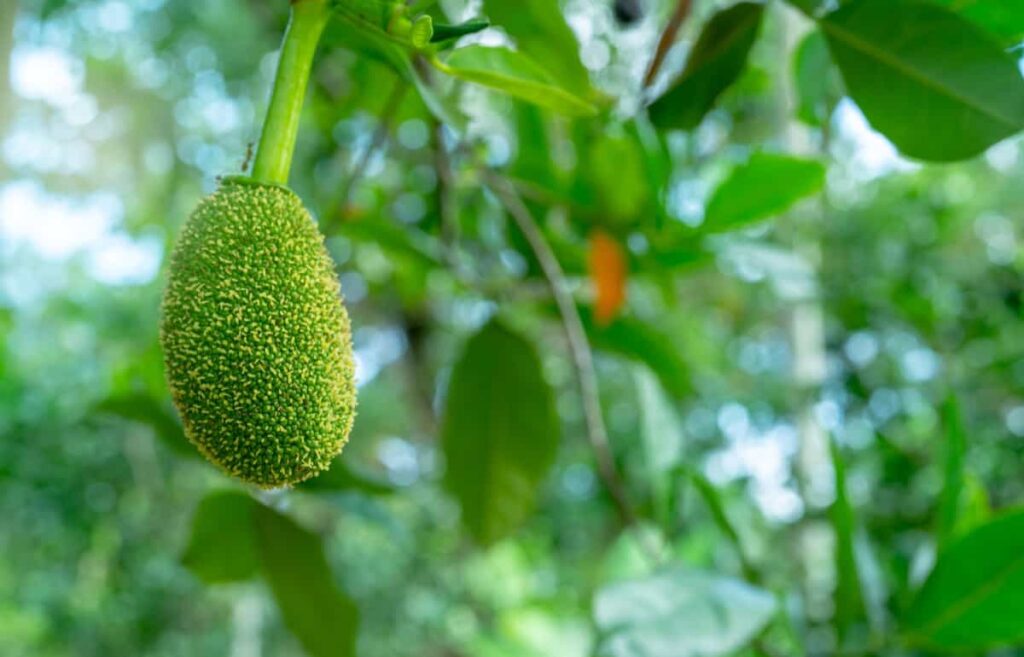
November Month Jackfruit Orchard Maintenance Planning
- Spray carbaryl at 2g/l or Cypermethrin at one ml/l twice at a 2-day interval to manage shoot borers.
- Avoid applying fertilizer or irrigation water in the orchard.
December Month Jackfruit Orchard Maintenance Planning
- Remove mite-infested twigs.
- Avoid applying fertilizer or irrigation water in the orchard.
Conclusion
Proper year-round care is crucial for the success of jackfruit orchards. Following the month-wise operations and maintenance schedule, including pruning, pest control, irrigation, and nutrient management, orchard owners can maximize fruit production and ensure healthy, thriving trees.
- Crops Grown in Summer Season: Best Choices for Summer Gardening
- Organic Pest Control for Tomato Farming
- How to Maximize Sheep Farming Profit
- Broccoli Varieties: Choosing the Right Cultivars for Your Farm
- How to Raise Pigs in Your Own Backyard: A Comprehensive Guide
- Budget Friendly Sheep Shed Ideas: Cheap and Low-Cost Tips
- How Much Do Cattle Farmers Make: Revenue Streams in Cattle Farming
- Management Pests and Diseases in Your Cotton Field
- Sheep Farming Business Plan for Beginners
- Aquaponic Farming at Home: A Step-By-Step Guide
- Profitable Village Farming Business Ideas in 2024
- High-Yield Aquaculture: Fast-Growing Fish for Farming
- Effective Fish Pond Construction Techniques for Beginners
- Irrigation and Water Management in Pineapple Farming
- Blossom to Harvest: Mastering Flowering and Pollination in Papaya Farming
- Pig Fattening Essentials: From Selection to Sale for Beginners
- Raising Wagyu Cattle: A Complete Guide for Premium Beef Production
- Soil Types and Their Water Holding Capacity
- Optimizing Irrigation Schedules for Coconut Groves for Enhanced Yield
- Espresso Your Garden: Coffee Grounds for Healthier Acid-Loving Plants
- The Best Soil Mix for Snake Plants: How to Mix Your Own Snake Plant Soil
- Green Thumb Success: Expert Tips for Cultivating Greenhouse Beans All Year Round
- Bloom All Year Round: The Ultimate Guide to Indoor Hyacinth Care
- Eco-Friendly Gardening: How to Make Liquid Fertilizer from Kitchen Waste
- Ultimate Guide to Grow Anise in Pots: Explore Seed Propagation to Harvesting
- Guide to Raising Chester White Pigs: Discover Breed Facts to Growth Management
- Mastering the Elegance: The Ultimate Guide to Weeping Cherry Tree Care, Planting, and Maintenance
- Ultimate Guide to Planting Garlic in Grow Bags: Growing Strategies for Beginners
- How to Fix Spider Plant Leaf-Related Problems: Natural and Organic Remedies
- 10 Reasons Why Your Tulsi Plant is Shedding Leaves: Home Remedies and Solutions
- Optimizing Growth and Yield: The Advantages of Palm Bunch Ash Fertilizer
- Utilizing Neem Oil Extract as a Natural Pesticide for Hydrangea
- From Soil to Harvest: Various Ways in Which Farmers Can Use AI Tools
- Steps to Encourage and Induce Citrus Flowers: A Comprehensive Guide
- How to Fix Snake Plant Leaf-Related Issues: Natural and Organic Remedies
- Transform Your Garden into a Fragrant Oasis with Raat Ki Rani (Night Blooming Jasmine)
